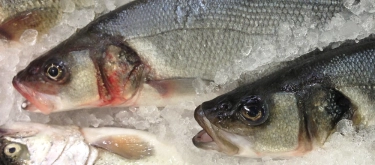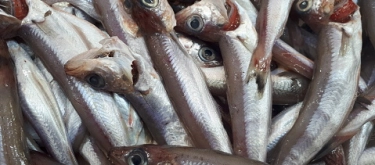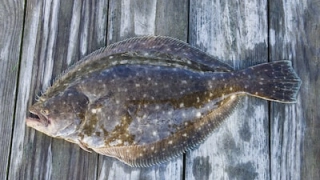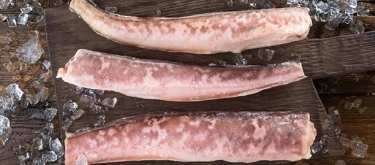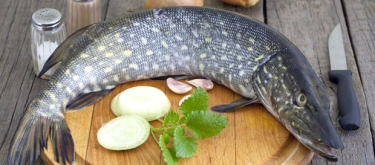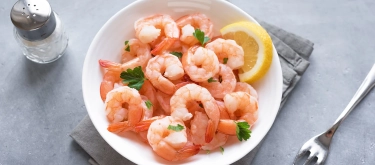Cod: Taste Profile, Aroma, Benefits and Health Risks
Cod is a highly valued white fish known for its mild taste, delicate texture, and culinary versatility. Integral to numerous culinary traditions, particularly in Northern European, Mediterranean, and North American cuisines, cod has historically been a dietary staple due to its abundant availability, nutritional profile, and adaptability in a wide range of dishes—from traditional fish and chips and baked cod fillets to gourmet preparations featuring elegant sauces and complementary flavors.
Cod is a fish product and unsuitable for vegetarians, vegans, or individuals allergic to fish and seafood. Naturally gluten-free, but processed cod products (such as battered or breaded fillets) may contain gluten. Always confirm ingredients and cooking methods to prevent allergen exposure.
What does Cod taste like?
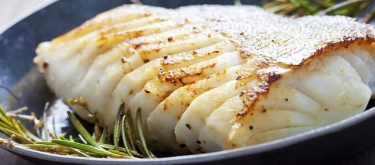
Complete Sensory Description
Taste
Cod has a mild, subtly sweet flavor characterized by gentle savory notes and delicate oceanic undertones. It lacks the pronounced fishiness or brininess often found in stronger-flavored seafood. Instead, cod offers a clean, refined palate experience, with subtle hints of butteriness and faint mineral accents reminiscent of clean seawater, making it widely appealing even to those sensitive to seafood flavors.
Aroma
Fresh cod displays a delicate, neutral marine aroma—clean, slightly briny, and subtly sweet. Upon cooking, its fragrance becomes gently aromatic, developing pleasant buttery notes and mild savory aromas without overpowering the senses. When pan-fried or baked, cod acquires faint caramelized and herbal nuances that enhance its appetizing character.
Texture
Cod's flesh is tender, flaky, and moist, composed of delicate white muscle fibers. When cooked properly, cod flakes effortlessly, yielding a gentle, succulent mouthfeel. Overcooking cod can quickly result in dryness, emphasizing careful, precise cooking methods to maintain optimal tenderness and juiciness.
Appearance
Raw cod exhibits translucent, pale white flesh, firm and slightly glistening, indicative of freshness. Upon cooking, cod flesh becomes opaque white, with subtle golden hues or light caramelization depending on cooking techniques. Its attractive appearance, particularly when gently browned or golden-crusted, adds culinary appeal to dishes.
In-depth Flavor Analysis
Cod’s subtle yet distinctly appealing flavor originates from a delicate balance of amino acids, minerals, and lipids within its flesh. Its mild sweetness stems from specific free amino acids, notably glycine and alanine, which impart gentle sweet notes. Additionally, glutamic acid contributes subtle savory (umami) depth without overpowering the palate, enhancing flavor complexity.
The fat content in cod, though relatively low, primarily includes beneficial omega-3 polyunsaturated fatty acids, particularly EPA and DHA. These fatty acids contribute subtle buttery undertones and mild richness, especially noticeable in cod sourced from colder, nutrient-rich waters, where fat stores are slightly more abundant, yielding a more tender and flavorful experience.
Cod’s flavor nuances are significantly influenced by its habitat and diet—fish sourced from colder northern waters (e.g., Iceland, Norway) generally possess cleaner, sweeter tastes due to richer diets of marine organisms, compared to those from warmer waters, which may exhibit slightly less pronounced sweetness and greater mineral undertones.
Preparation methods also shape cod's taste substantially. Gentle cooking techniques such as steaming or poaching preserve cod's inherent delicate sweetness, while frying or roasting develops slight caramelization through Maillard reactions, imparting subtle nuttiness and enhanced savory complexity, elevating its overall culinary appeal.
Varieties and Culinary Applications
Atlantic Cod
The most common variety, widely appreciated for its delicate texture and mild flavor. Ideal for baking, frying (e.g., traditional fish and chips), poaching, grilling, or broiling, complementing a wide array of culinary flavors such as garlic, herbs, butter sauces, or citrus-based marinades.
Pacific Cod
Slightly firmer flesh with a similarly mild flavor, well-suited for grilling, pan-frying, or oven-roasting, often featured in Asian-inspired or American seafood preparations.
Salted Cod (Bacalhau)
Popular preserved version particularly significant in Portuguese, Spanish, Caribbean, and Brazilian cuisines. Requires rehydration, then typically used in stews, casseroles, fritters, or hearty dishes, providing deeper savory and salty complexity.
Culinary Versatility
Cod is renowned for its adaptability to diverse culinary techniques—pan-seared with simple herbs and lemon, battered and fried, gently poached in flavorful broths, or incorporated into chowders, soups, or curries.
Selection and Storage
Selecting Quality Cod
- Fresh cod should feature translucent white or off-white flesh, firm texture, and a mild oceanic smell.
- Avoid cod with dull coloring, slimy or excessively dry textures, or strong fishy odors indicating poor quality or spoilage.
Storage Recommendations
- Refrigerate cod promptly at temperatures below 4°C (39°F), ideally consuming fresh fish within 1–2 days.
- For longer storage, freeze cod wrapped tightly or vacuum-sealed, consuming within 3–6 months for optimal freshness.

Nutritional Insights
-
Lean Protein Source:
Cod provides high-quality protein, essential amino acids crucial for muscle maintenance, growth, and overall health. -
Low in Fat and Calories:
Extremely low-fat, low-calorie seafood choice, ideal for heart-healthy and weight-conscious diets. -
Vitamins and Minerals:
Rich in vitamin B12, vitamin B6, selenium, iodine, potassium, phosphorus, and magnesium—nutrients essential for neurological function, immune support, bone strength, and energy metabolism. -
Omega-3 Fatty Acids:
Contains modest amounts of beneficial omega-3 fatty acids, supporting cardiovascular health and cognitive function.
Expert Insights & Culinary Tips
-
Optimal Cooking Methods:
Culinary professionals recommend gentle cooking methods—baking, steaming, poaching—to retain cod's moisture, tenderness, and subtle flavors. -
Flavor Pairings:
Cod pairs beautifully with lemon, garlic, herbs (parsley, dill, tarragon), butter-based sauces, capers, olives, tomatoes, or simple seasoning blends, highlighting its natural mild sweetness and refined taste. -
Avoid Overcooking:
Precise cooking timing is essential, as cod quickly dries out; cooking just until flesh flakes easily ensures tender, moist, flavorful results.
Interesting and Curious Facts
- Cod played a crucial historical role in global culinary trade, particularly salted cod ("bacalhau"), widely traded and consumed worldwide.
- Fish and chips, the quintessential British street food, commonly uses cod due to its ideal texture, mild flavor, and suitability for battering and frying.
- Cod liver oil, derived from cod liver, is nutritionally celebrated for high vitamin D and omega-3 content, historically consumed as a nutritional supplement.
Harm and Dietary Considerations
-
Moderate Mercury Levels:
Generally safe, yet pregnant women and young children should consume cod in moderation due to potential mercury content. -
Allergy Risks:
Individuals with fish allergies must avoid cod to prevent allergic reactions. -
Foodborne Illness Prevention:
Thorough cooking (internal temperature at least 63°C/145°F) is vital to eliminate seafood pathogens.
Final Thoughts & Sensory Journey
Cod remains an esteemed seafood delicacy appreciated globally for its refined, mild sweetness, tender texture, and culinary versatility. Its gentle flavor profile complements diverse dishes, offering nutritious, delicious experiences. Whether traditionally battered and fried, gently steamed, or elegantly baked, cod delivers delightful sensory enjoyment, nutritional benefits, and gastronomic satisfaction in equal measure.
Resources
- McGee, H. (2004). On Food and Cooking: The Science and Lore of the Kitchen. Scribner.
- USDA FoodData Central (2023). Cod Fish: Nutritional Information, Handling, and Cooking Safety.
- Food and Agriculture Organization (FAO). (2021). White Fish Varieties: Culinary Applications and Nutritional Benefits.
